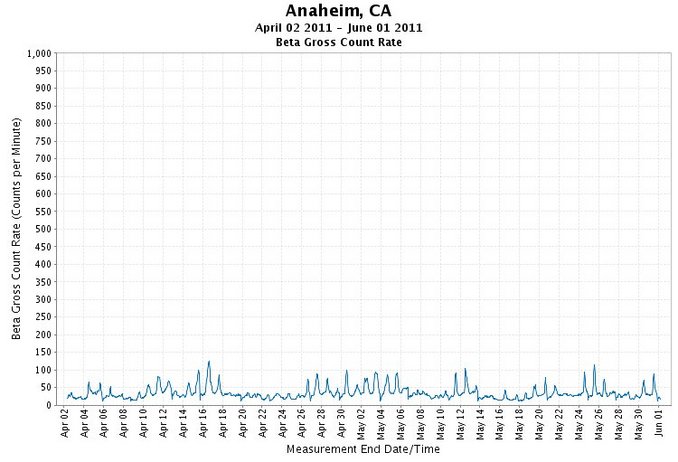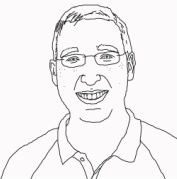
The radiation levels detected in California, shown on EPA's "RadNet" website (http://www.epa.gov/radiation/rert/radnet-anaheim-bg.html#beta) do notshow the radiation levels before the date of the earthquake in Japan, March 11, 2011. Above is an example graph of radiation in Anaheim, CA since the earthquake on March 11.
This historical data is what's called a "baseline" in science and other fields--it is needed to know how much change in radiation there has been since the catastrophe. Without seeing the data, we just have to take their word for it that it's a small, harmless amount.
Granted, the radiation in the air would have needed a few days to arrive to CA via the jet-streams--it may not have shown up instantly on March 11. In fact, somewhat higher levels of radiation were first reported in California on March 18: http://sacramento.cbslocal.com/2011/03/18/first-radioactive-particles-from-japan-reach-california/. So March 11 through 18 can be treated as a baseline period, and in the graphs that EPA has published, no clear increase in radiation can be seen during that period.
However, as a true science geek, I have dug a bit further. Gamma radiation, one of the forms of radiation emitted by the damaged nuclear power plants in Japan may not need to travel "on the wind." According to the EPA website: "gamma photons travel at the speed of light and can cover hundreds to thousands of meters in air before spending their energy." (http://www.epa.gov/radiation/understand/gamma.html#properties) They can also pass through water, and many solid objects, for a certain distance, depending on how much energy they had to start with. I don't know how much energy the gamma rays emitted from Fukushima had, so it's hard to say whether a spike in radiation may have occurred from March 10 to March 11, 2011.
In short, we wouldn't need to speculate about these things if the EPA would simply publish this data, if they have it to publish. It's human nature, and healthy, to become a tad inquisitive when one isn't given all the data, so to speak.


 RSS Feed
RSS Feed